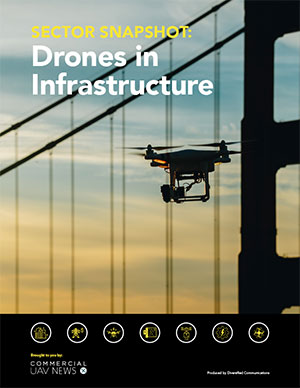Conversations around utilizing AI and autonomy across all workforces ramp up as their capabilities grow and we weigh the pros and cons of integrating them into our businesses. The drone industry is seeing a shift in operator roles as this technology gets implemented and there is a greater need for system management, data management, and strategic oversight.
At the Navigating the Future of the Drone Industry: Autonomy, AI, Innovation, and Beyond session, Commercial UAV Expo gathered industry leaders who have dealt firsthand with this workplace transition to discuss what it means to be a drone operator in the age of AI, and how to keep businesses scalable in this autonomous environment. Moderator Kaitlyn Abertoli, CEO and co-founder of Buzz Solutions, sat down with panelists representing a variety of backgrounds as software providers, hardware manufacturers, and service providers to get their insights on what the drone industry will look like in the near future.
AI
As one would expect, the panel spent a good amount of time discussing how AI is revolutionizing the drone industry and its workforce, with all panelists agreeing that AI is redefining what it means to be a drone operator. In the early days of the drone industry, being a drone operator simply meant that you were flying the drone. Today, this role is more complex and layered, with operators being responsible for data collection, operating data management systems, and finally, processing that data. This presents the perfect opportunity for AI to lend a hand and relieve the operator from data management tasks.
One example a panelist shared was the complexities of obtaining a pipeline plan and what regulatory needs surrounded that. Panelist Armin Ambuehl, CTO of Wingtra, explained how AI can lend a hand.
“The software should be navigating these complexities, and the human should be in control and in the loop by thinking about what the outcomes will be. We can support this from the manufacturer's perspective by providing all the interfaces that we as humans can easily work with.”
Despite all the efficiencies and modernizations AI promises, Adrien Briod, co-founder and CEO at Flyability called out the importance of keeping a human in the loop.
“The user needs to remain in the center of the process to give final approval, especially in critical situations like assessing the health of a bridge or condition of a ship.”
Ambuehl reinforced the idea that the success of their products depends on how well they solve their customers’ problems, saying, “nothing we ever develop is without the customer in the loop.”
Training
As new technologies are adopted into everyday work, new training strategies need to follow suit in order to keep the workforce concurrent with the systems that are powering projects. A big part of that involves a shift from hands-on flight training to mastering how to use the software behind the drones as those begin to do the heavy lifting. In the theme of keeping a human in the loop, this doesn’t mean that pilots won’t be trained on how to fly anymore, but there will be a bigger emphasis on drone operators to be well-versed in flight planning and data processing programs. All panelists agreed that the best way to get to this point is to develop software that is simple to learn.
“The more intuitive a product is, the less friction for adoption, and it becomes easier to democratize technology,” said Ambuehl.
Scalability
Part of preparing for the future is ensuring that your products are dynamic and flexible enough to adapt to the needs of the industry of the future. Doing so allows you to scale your business as different challenges arise.
Bill Irby, CEO at AgEagle Aerial Systems, Inc. shared his philosophy on how anticipating customer needs puts you a step ahead.
“It comes down to figuring out what the most likely scenarios users will experience, then you can develop a system and software to meet those users' unique needs.”
While the panel conversation covered a range of topics on how to be successful in the complex future that we face, one simple theme rang true through the hour; fostering a strong relationship built on understanding and taking the time to learn from your customers, hearing their needs and collaborating to further develop your products and services to meet said needs will take your company far.
As Nitin Gupta, founder and CEO at Flytbase, stated early in the conversation, “there are no playbooks that work for everybody. Your solution out of the box will not work for everyone.”
James Pierce, Manager for UAS Operations and Inspection Services at Ameren, drove it home by explaining how his team values customer insight.
“The use cases that weigh the heaviest on us are the ones that provide the most value to our customers.”















Comments